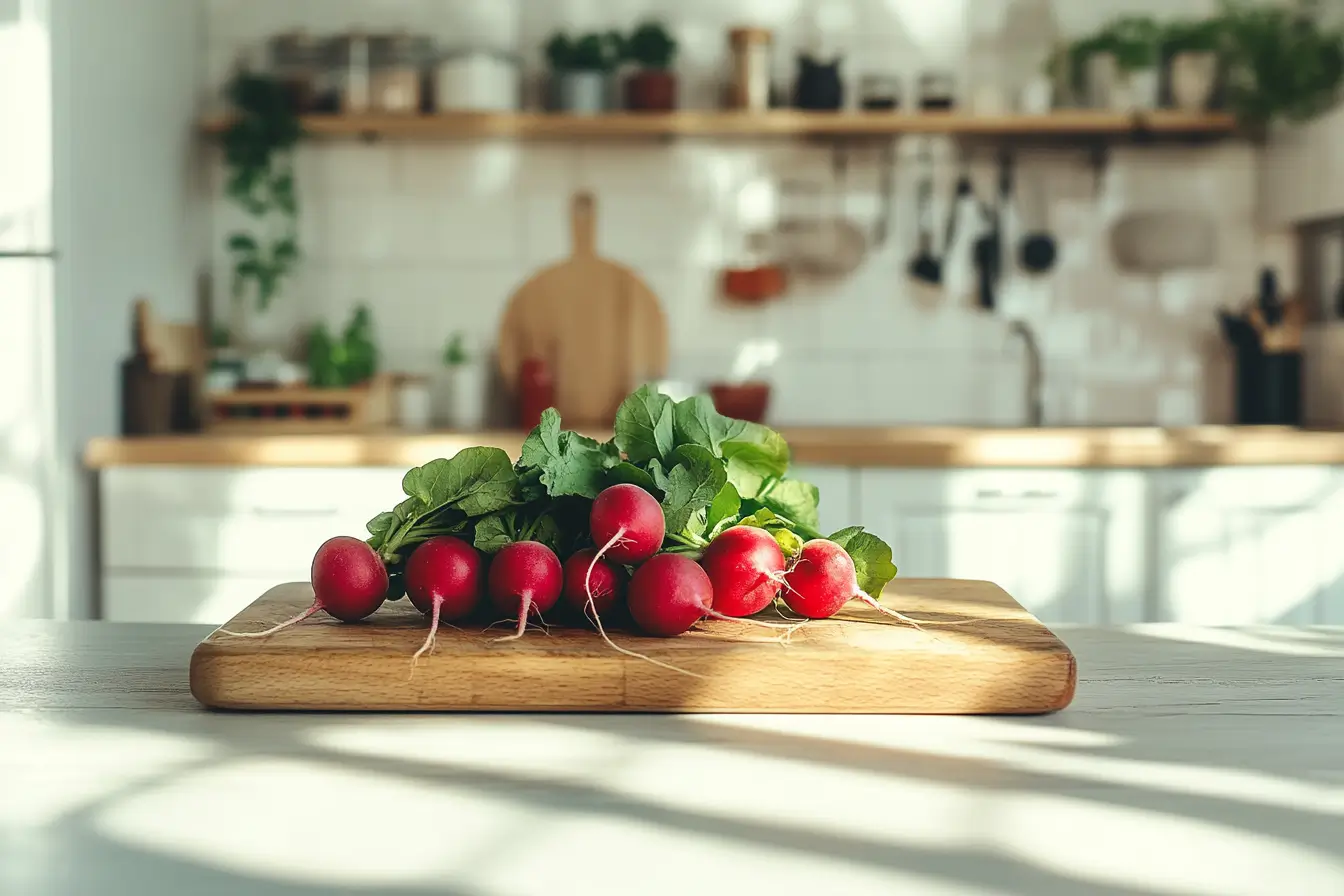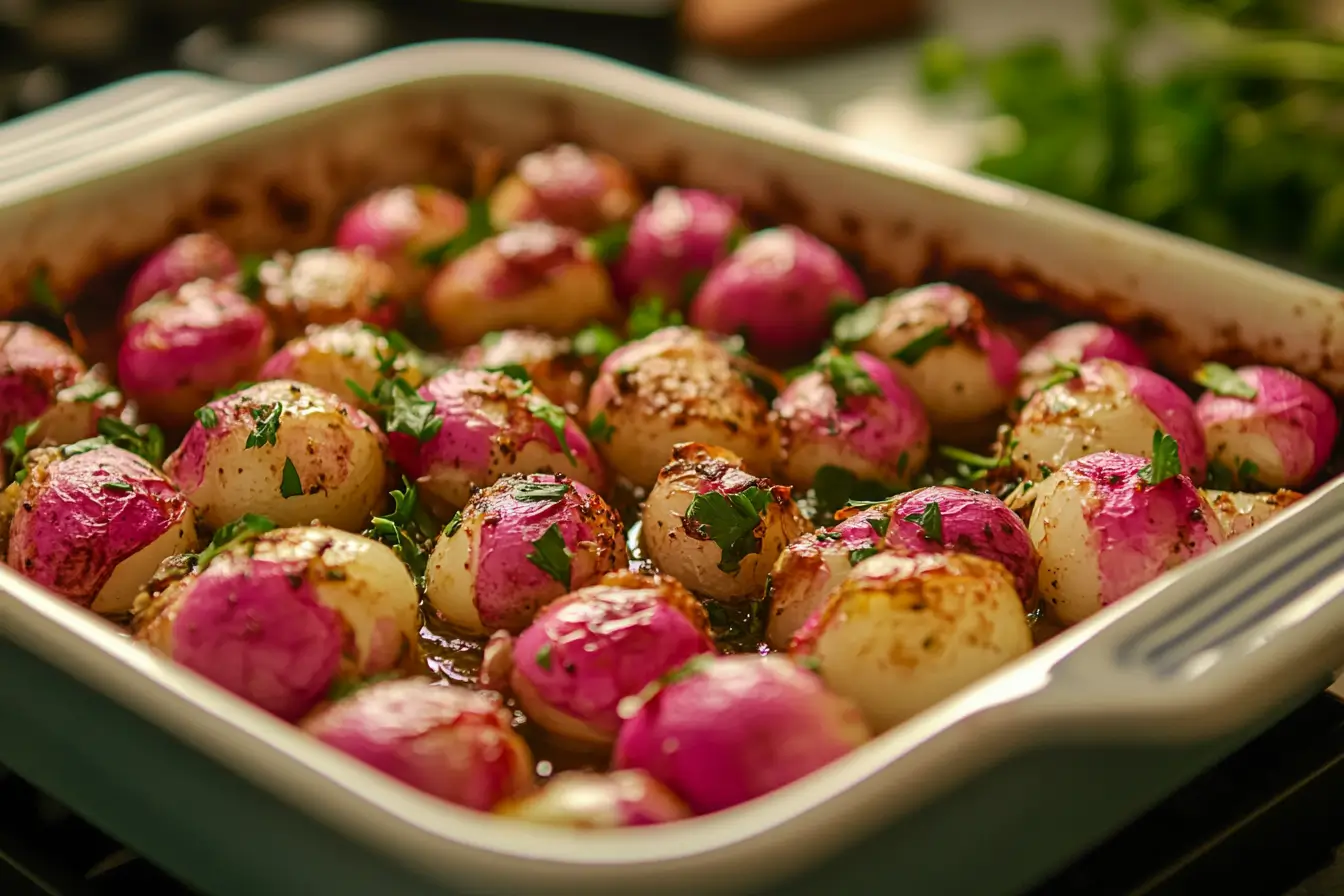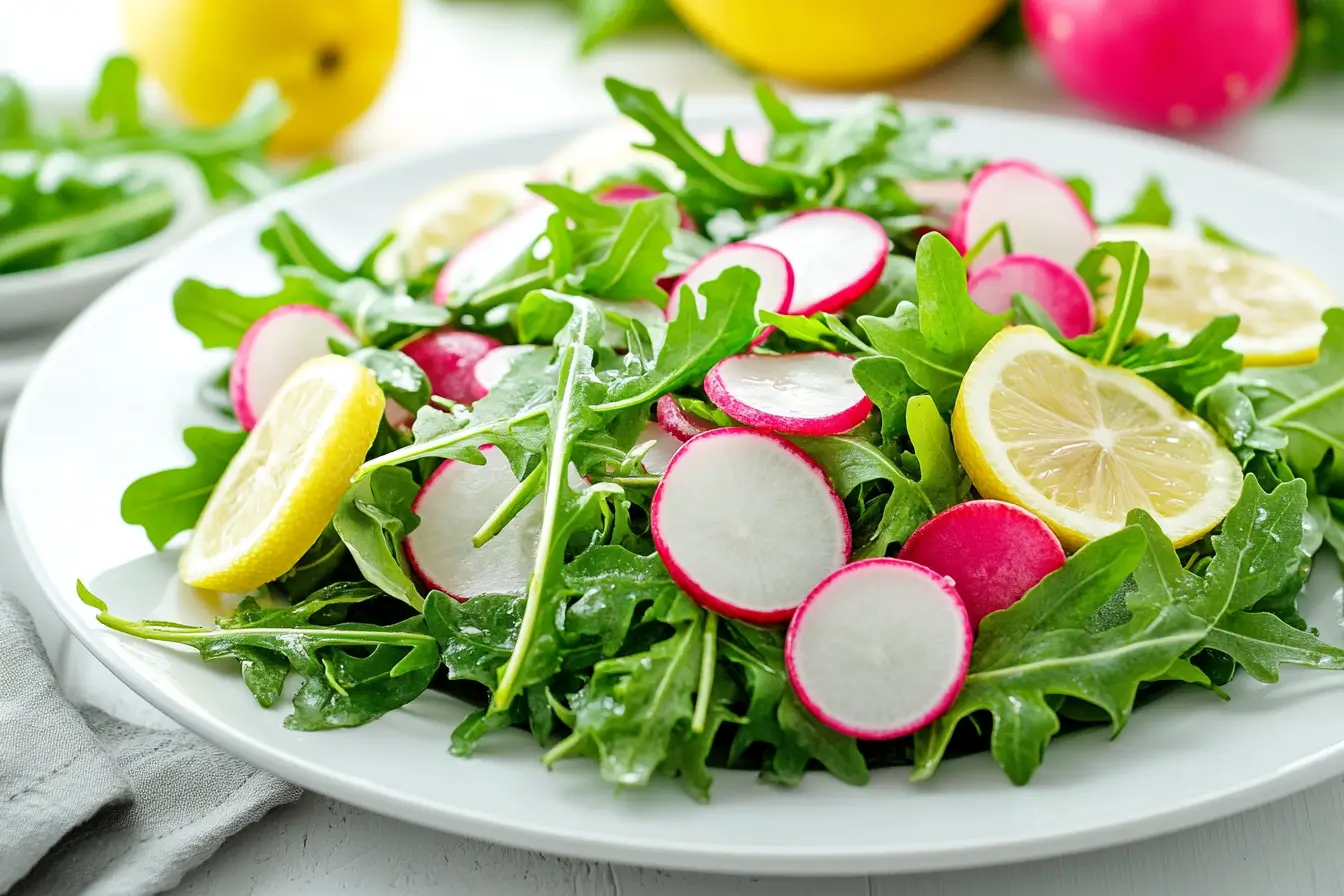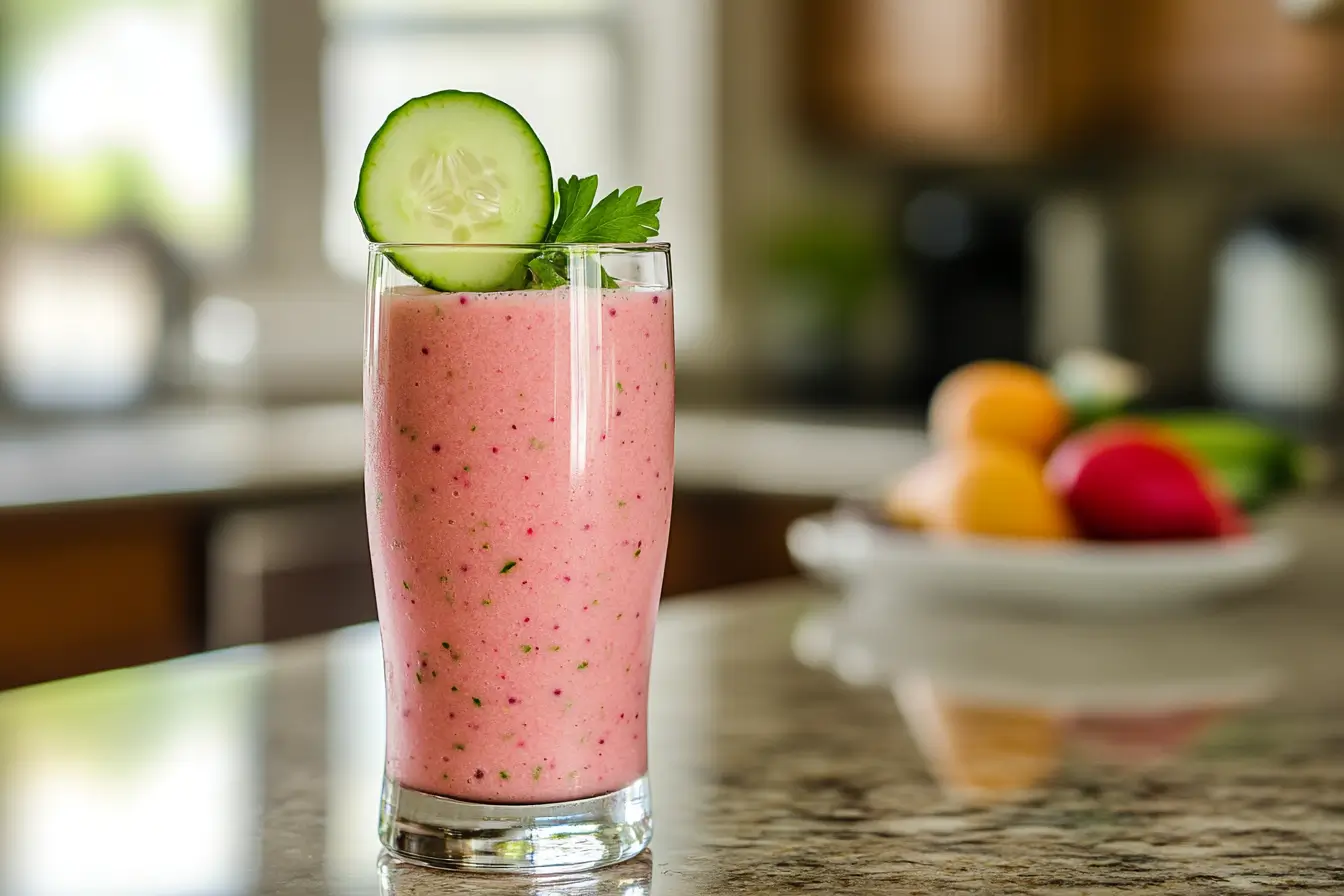The Best Fluffy Pancakes recipe you will fall in love with. Full of tips and tricks to help you make the best pancakes.

Introduction to Radishes: A Nutritional Powerhouse
What is the healthiest way to eat radishes? These crunchy, colorful root vegetables are not just a sidekick to salads; they’re a nutritional powerhouse! Packed with essential vitamins, minerals, and antioxidants, radishes can be enjoyed in a variety of ways—raw, roasted, pickled, or blended into smoothies. But have you ever wondered which method retains the most health benefits? Let’s explore the healthiest way to eat radishes and uncover their incredible benefits.
“Radishes may be small, but they pack a powerful nutritional punch!”
Types of Radishes and Their Unique Benefits
Red Radishes: A Crisp and Spicy Favorite
When most people think of radishes, the red ones come to mind. These spicy little wonders add a peppery kick to salads and snacks. Rich in vitamin C, they’re excellent for your immune system!
Daikon Radishes: Mild and Versatile
Looking for something less spicy? Daikon radishes are mild, making them perfect for soups, stir-fries, and pickling. Plus, they’re fantastic for digestion thanks to their high fiber content.
Watermelon Radishes: A Colorful and Sweet Delight
If you’ve ever seen a radish that looks like a mini watermelon, you’ve spotted a watermelon radish. Beyond its gorgeous appearance, it offers a subtly sweet flavor and a healthy dose of antioxidants.
Nutritional Value of Radishes: What Makes Them Healthy?
So, what’s in a radish? A lot more than you might think! They are packed with vitamins and minerals that support overall health. Want to learn more about the incredible benefits of radishes? Check out 10 Amazing Health Benefits of Radish You Need to Know.
| Nutrient | Amount per 1 Cup (116g) |
|---|---|
| Calories | 19 |
| Vitamin C | 14% of Daily Value (DV) |
| Fiber | 1.9g |
| Potassium | 270mg |
| Antioxidants | High |
Vitamins and Minerals in Radishes
Radishes are loaded with essential nutrients like vitamin C, potassium, and folate. These nutrients work together to support your overall health, from boosting your immune system to helping your muscles function properly.
Antioxidants and Their Role in Health
Did you know that radishes are rich in anthocyanins and other antioxidants? These compounds help combat oxidative stress, reducing your risk of chronic diseases like heart disease and cancer. Think of antioxidants as your body’s personal cleanup crew!
High Fiber Content for Digestion and Weight Loss
Struggling with digestion? Radishes are here to save the day! Their high fiber content not only supports gut health but also keeps you feeling full, making them a weight-loss-friendly snack.
Health Benefits of Eating Radishes Regularly
Detox Properties and Liver Support
Radishes are like nature’s detox agents. They help flush out toxins from your liver and kidneys, keeping these vital organs in top shape.
Boosting Digestion and Gut Health
Ever felt bloated? Adding radishes to your diet can help! Their natural compounds improve digestion and prevent constipation. Your gut will thank you.
Strengthening Immunity with Vitamin C
Want to fend off colds and flu? Radishes, with their high vitamin C content, can give your immune system a solid boost. A handful of these can keep the doctor away!
Raw vs. Cooked Radishes: Which is Healthier?

Health Benefits of Eating Raw Radishes
Raw radishes are like nature’s instant energy snacks. Crunchy, juicy, and slightly spicy, they are at their nutritional peak when consumed raw. This means you’re getting maximum vitamin C and antioxidants. Curious whether radishes are better eaten raw or cooked? Read more in Are Radishes Better Cooked or Raw?.
Cooking Radishes: Do Nutrients Get Lost?
Cooking radishes is like taming a wild horse—it takes away their spice but softens their texture. While some vitamin C might be lost in the process, cooking enhances their sweetness and makes them easier to digest. Perfect for those who find raw radishes too sharp!
Best Ways to Cook Radishes for Retaining Nutrients
Want to keep most of the nutrients intact? Try steaming or roasting them. Roasting caramelizes their natural sugars, giving them a delightful sweetness. Plus, adding a sprinkle of olive oil ensures better absorption of fat-soluble vitamins.
Delicious and Healthy Ways to Eat Radishes
Adding Radishes to Fresh Salads

Radishes can add a refreshing crunch to salads. Thinly sliced radishes pair beautifully with arugula and a lemon vinaigrette. Looking for more creative ways to use radishes? Check out What Can I Do With an Abundance of Radishes?.
Quick and Easy Pickled Radishes Recipes
Pickling radishes is like giving them a personality makeover—they transform into tangy, zesty delights. All you need is a jar, vinegar, sugar, and a few spices. They’re perfect as a topping for tacos, burgers, or even grain bowls.
| Ingredient | Quantity |
|---|---|
| Radishes | 10 small, thinly sliced |
| White vinegar | 1 cup |
| Sugar | 1 tablespoon |
| Salt | 1 teaspoon |
| Spices (e.g., peppercorns, mustard seeds) | 1 teaspoon each |
Roasted Radishes: A Unique Side Dish
Looking for a creative side dish? Toss radishes with olive oil, salt, and garlic, then roast them at 400°F until tender. They’re a bit like roasted potatoes but with fewer carbs and a pop of color.
Incorporating Radishes into Smoothies and Juices
This might sound odd, but radishes in smoothies? Trust me, it works! Blend them with pineapple, cucumber, and a hint of ginger for a refreshing detox drink. It’s like a spa day in a glass.

Best Combinations to Enhance Radish Flavor and Nutrition
Pairing Radishes with Healthy Fats
Radishes love a good partner, and healthy fats are a match made in heaven. Pair them with avocado or drizzle them with olive oil to help absorb their fat-soluble nutrients like vitamin A.
Using Radishes in Asian and Mediterranean Dishes
In Asian cuisine, radishes shine in kimchi or stir-fries. In Mediterranean dishes, they’re often found in mezze platters or tossed with hummus. They adapt beautifully to these bold and flavorful cuisines.
Mixing Radishes with Other Seasonal Vegetables
Radishes play well with others! Combine them with carrots, cucumbers, or beets to create a vibrant, nutrient-packed salad that’s as Instagram-worthy as it is tasty.
Common Issues and Solutions When Eating Radishes
Dealing with Spicy or Pungent Flavor
Raw radishes can sometimes taste too spicy. A quick soak in cold water can reduce their intensity and make them more palatable. Not only do radishes taste great, but they’re also full of health benefits. Want to know more? Read 10 Amazing Health Benefits of Radish You Need to Know.
Addressing Digestive Sensitivity to Radishes
Radishes are high in fiber, which is great for most people but can cause bloating in others. Cooking them can help reduce their fibrous impact while still providing health benefits.
Overcoming Limited Availability and Storage Challenges
Radishes are best in spring but available year-round. Store them in a perforated plastic bag in the fridge to keep them fresh for up to two weeks. Easy-peasy!
Tips for Buying, Storing, and Preparing Radishes
Choosing Fresh and Seasonal Radishes
When buying radishes, look for ones that are firm, brightly colored, and free of cracks. The greens should be vibrant and fresh, as they’re a good indicator of the radish’s quality. If possible, shop for radishes during their peak season in spring for the best flavor and texture.
Proper Storage for Maximum Freshness
Radishes can lose their crunch if not stored properly. To keep them fresh, remove the greens and store the radish bulbs in a perforated plastic bag in the refrigerator. This method will keep them crisp for up to two weeks.
Prepping Radishes for Different Recipes
Before using radishes, rinse them thoroughly under cold water to remove any dirt. You can slice them thin for salads, grate them for slaws, or leave them whole for roasting. Don’t toss the greens—they’re edible and can be sautéed or blended into smoothies for extra nutrients!
Bonus Tip: Reviving Limp Radishes
If your radishes have gone a bit soft, don’t throw them away! Soak them in ice water for an hour to restore their crunch. It’s a simple trick to reduce food waste and enjoy them at their best.
Frequently Asked Questions (FAQs)
Are Radishes Better Raw or Cooked?
This is a question that often sparks debate! Raw radishes are unbeatable for their crunch and nutrient density. They’re perfect for salads, snacks, and garnishes. However, cooked radishes transform into something entirely different—soft, sweet, and mellow. If you’re looking to reduce their spice or improve digestion, cooked is the way to go. Why not enjoy the best of both worlds?
What’s the Best Way to Eat Radishes?
The best way to eat radishes depends on your personal taste. For a quick snack, slice them thin and sprinkle them with a pinch of salt. If you’re in a culinary mood, try pickling them or tossing them into a stir-fry. Radishes are incredibly versatile, so let your creativity guide you!
What Should Not Be Eaten with Radishes?
While radishes are generally safe to pair with most foods, some combinations can cause discomfort. Avoid eating radishes with milk, as the mixture may lead to bloating or indigestion. Additionally, consuming radishes with highly acidic foods might intensify their pungency, which could be overwhelming for some palates.
How Many Radishes Per Day Should I Eat?
Moderation is key. Eating 5–10 radishes a day is a safe and healthy choice for most people. They’re low in calories and high in nutrients, making them a guilt-free addition to your diet. Just keep an eye on portion sizes if you have a sensitive stomach.
Tips for Buying, Storing, and Preparing Radishes
Choosing Fresh and Seasonal Radishes
When shopping for radishes, look for ones that are firm with bright, unblemished skin. If they have greens attached, make sure they’re fresh and vibrant—it’s a sign of recently harvested radishes. Spring is the best time to enjoy them at their peak!
Proper Storage for Maximum Freshness
Want to keep your radishes crisp and delicious? Store them in the refrigerator in a perforated plastic bag or a damp paper towel. This will maintain their moisture and prevent them from wilting. Pro tip: Remove the greens before storing to keep them fresher for longer.
Prepping Radishes for Different Recipes
Radishes are as low-maintenance as vegetables get! Give them a quick rinse under cold water to remove any dirt, then slice, dice, or grate them based on your recipe. For a fancy touch, try cutting them into thin rounds or matchsticks.
Embrace Radishes for a Healthier Diet
Radishes may not be the star of the vegetable world, but they deserve a spot on your plate. Whether you’re crunching on them raw, roasting them for a sweet treat, or pickling them for a tangy side, radishes are a delightful and nutritious addition to any meal. So, why not give them a try? Your taste buds—and your body—will thank you!
“Radishes: small but mighty, and ready to transform your meals with crunch, color, and health benefits.”








